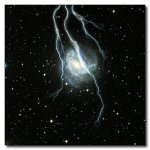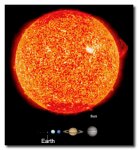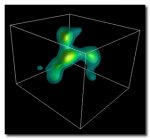#6. A Planet Made of Diamond
Science fiction writers have this annoying thing they do where they can only think of like five different types of planets. You know, there's the ice planets (like Hoth in
The Empire Strikes Back) and the forest planets (like in
Avatar), desert planets, lava planets, etc.
But scientists have studied almost 700 real planets outside the solar system, and some of them are downright gaudy. Case in point:
PSR J1719-1438 b. Planet Fancy isn't having any of that rocky gassy stuff. Because it's straight up made of diamond:

How Is This Even Possible?
The universe's biggest showoff actually used to be a star, and sometimes the debris that's left over after the star dies starts a second career as a planet. In this case, Blingworld started off life as one of two parts of a binary star. The larger twin made like a bomb and supernova-ed. What was left behind was a pulsating star, or pulsar, and a white dwarf. The dwarf stabilised just far enough away from its former brother to lose matter to the bully but to keep its carbon core.

Carbon is just a load of heat and pressure away from becoming a diamond. On Earth, that happens underground and creates little shiny bits for people to dig up and cram into their jewellery. But in this particular spot in space, the conditions were just right for the entire interior of that former star to harden, crystallize and turn into a planet-sized gem.
Damn it, mankind's single goal should now be to assemble a mission to tow this back to Earth. There's one pawn shop owner who's going to be in for a big surprise.













